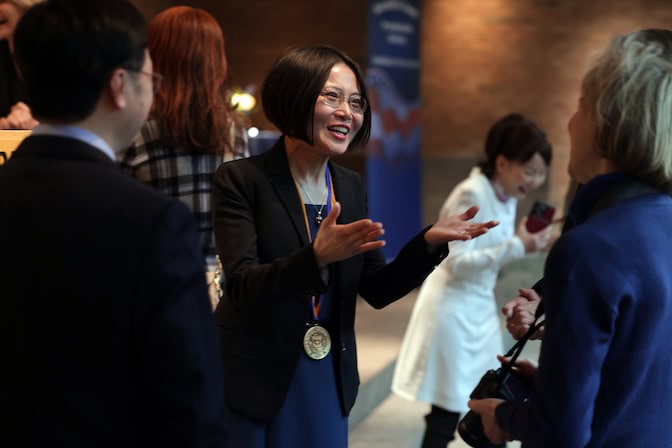
Tumor-destroying histotripsy, explained by its inventor: A Q&A with Zhen Xu
University of Michigan startup HistoSonics was acquired this week for $2.25 billion.

University of Michigan startup HistoSonics was acquired this week for $2.25 billion.
Experts
The announced acquisition of HistoSonics will enable histotripsy, the revolutionary, non-invasive technique for destroying tumors developed at the University of Michigan, to reach more potential patients than ever before.
Zhen Xu, the Li Ka Shing Professor of Biomedical Engineering at U-M and a co-inventor of histotripsy, discussed the technology, HistoSonics and how both came to be.
Xu: We’ve developed an alternative treatment to cancer that is non-invasive—no incisions and no harmful side effects—by harnessing sound waves. Using ultrasound technology created at U-M, we’re providing a treatment alternative to options such as chemotherapy and radiation, which take a toll on patients.
We use a transducer—which converts electricity into sound—to deliver ultrasound waves to a malignant mass at a precise location. When the waves hit gasses inside cancerous cells, they generate a cloud of tiny bubbles through a process known as cavitation.
Pulsing sound waves cause the millimeter-sized bubble cloud to repeatedly grow and collapse. The mechanical energy created breaks up the tumor cells’ structure, turning it into a harmless liquid called acellular lysate.
We can also use those same ultrasound waves to produce a detailed image of the tumor we’re targeting, improving accuracy. We can shrink the target diameter of the pulses we use down to one millimeter so we’re hitting the tumor, and only the tumor. That drastically reduces the damage done to surrounding tissues.
Xu: We’ve created an alternative to traditional cancer treatments that can be a far better option for some patients. Histotripsy can offer the effectiveness of tumor removal without the damage that traditional treatments can bring.
The accuracy we talked about means we can be precise. Radiation treatments impact the tumor as well as the area around it. Chemotherapy typically affects the whole body. Both come with harsh side effects that can linger for weeks, months or longer. And surgeries come with added risk and, often, long recovery times.
Histotripsy, on the other hand, comes with few, if any side effects and little recovery time due to its precision and non-invasive nature.
Xu: The work on histotripsy started at U-M with the late Charles Cain, whose research focused on ultrasound technologies. In the 1990s, he’d been investigating the possibility of using the heat generated by ultrasound to destroy cancer cells. But eventually he moved away from the heat aspect and focused on cavitation.
I worked with him at the time, along with other U-M engineers and doctors, attempting to understand how the bubbles created by the cavitation could be used, targeted and controlled to impact tumors.
In 2009, a group of us, from both Michigan Engineering and Michigan Medicine, formed HistoSonics to commercialize the technology. At the time, we didn’t make a huge deal out of it, just dinner and drinks at a nearby restaurant.
We received early support from the U-M Coulter Transitional Research Partnership Program. They focused on developing and commercializing healthcare products. And then U-M’s Innovation Partnerships stepped in to provide intellectual property support.
Xu: One of the best parts about science is turning the impossible to possible. It has been the challenge and highlight of my lifetime to see our response to a simple question —Can we create a non-invasive interventional technology that performs the real surgery?—evolve into a platform that is revolutionalizing cancer treatment.
I am proud of what we have accomplished for patients so far and, with this acquisition, I anticipate quickly expanding histotripsy to benefit patients with various tumor types and neurological diseases all over the world.